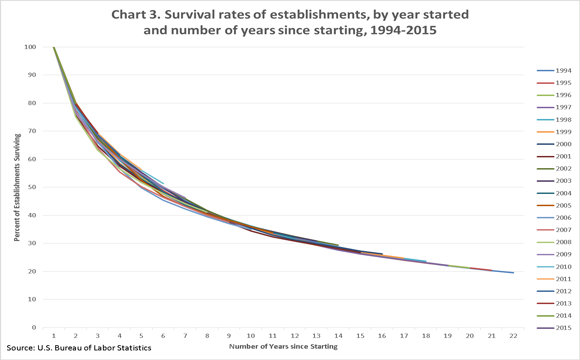Author’s Corner
In this white paper, Steve Meier, Director of Marketing, explores the challenges businesses face in achieving long-term success and discusses strategies to overcome them.
Please click on the video to the right to learn more about the author, hear his insights on this white paper, and learn what motivated him to write about this subject.
To discuss this topic, please reach out to Steve using the contact information provided at the bottom of the white paper.
American business magnate and philanthropist John D. Rockefeller once stated, “If you want to succeed, you should strike out on new paths, rather than travel the worn paths of accepted success.” His business principles were adopted and used by many successful companies in the decades that followed and, in many cases, are still widely in use today.
Navigate the Potholes
Starting and operating a business isn’t new, and failing at that business isn’t new either. Succeeding in today’s ultra-competitive landscape is also not as easy as it once was, as competition can be instantaneous and not gradual over the course of many years.
According to the Bureau of Labor Statistics, 20%-30% of new businesses fail within the first few years of operation, almost 50% fail within the first five years, and 65% within the first ten years. That number grows to almost 75% by year 15. When comparing the survival rates of new companies since the 1990s, you can see that they follow a very similar path, regardless of year, as seen in chart 3 below. This information is not new; it has been fairly consistent since the 90s, and people have heard these same numbers regurgitated time and time again.

The real question is, why do businesses have enough success to get off the ground, yet not enough momentum to sustain exponential growth? The answer usually lies somewhere between operational pitfalls, and lack of leadership to notice when it’s time for a change.
Watch for Warning Signs
If you read any one of the many impactful business leadership or management books available, they all have the same concept in mind: prioritize your target goals, develop a strategy that aligns the team to achieve those goals, and then implement and monitor achievements towards the completion of those established goals. This, for many, if implemented properly, is the key to success. Although, if that is the case, why, again, is the failure rate still so high?
To understand why businesses fail, you must get to the root cause of the problem. Luckily, in this day and age, everything is tracked analytically and broken down into extreme detail. Utilizing available data and analytics helps to identify where your company may fit and could help identify solutions to some of the most common mistakes.
While sifting through the ashes of 101 previous failed startups, CB Insights was able to determine 20 specific scenarios that led to their demise.

Some of the most glaring holes identified were: no market need, a lack of funds, the wrong team, outcompeted by others in the industry, pricing or cost issues, an unfriendly user product, a poor business model, and poor marketing. Looking through all of these issues, it’s quite obvious that not enough research was completed to understand the market or understand the complexities of the market.
To make matters worse, empowering the wrong team to execute operations will lead to these exact types of issues that eventually lead to demise. In short, it’s imperative to understand your market, have the right team in place, and have the operational fortitude to realize that when things are going wrong, it’s necessary to make changes for the sake of the business.
Now that you know what to avoid, what can you do to ensure you don’t encounter these types of pitfalls so that your company doesn’t end up a statistic?
Pave New Roads
Unless you are in the food business, there is no special sauce that guarantees your company will be a success. Although, there are very fundamental principles that you can enact to ensure you are best prepared for whatever roadblocks you may encounter.
Prepare:
Identify your target market, target industry, or key operational goals that will be the driving force behind this process. Be very specific about where you expect to end up and identify very specific milestones along the way to track progress.
Prioritize:
Develop key performance indicators that will allow you to track progress against established goals. Not everything can be a priority, so you must establish what your main priorities are and rank them in order. You may have multiple priorities depending on your business or team structure, which is fine; just make sure that priorities are assigned to different stakeholders so that it all doesn’t fall on one person or small group of people.
Develop:
A website, social media page, or operational goal is not enough to reach the pinnacle of success. You must have a well-thought-out plan of action that includes extremely detailed goals and milestones, accounts for all potential pitfalls, and includes the infrastructure necessary to achieve the milestones set forth.
Wishing upon a star works for some, but grabbing opportunities and wrestling them to the ground will lead to greater success. Develop a plan of action that aligns all members of your team with tasks assigned to each, and work to ensure that all members achieve their deadlines efficiently and on time. There are no excuses with this step.
Implement:
With aligned goals for success, implement your plan of action exactly as planned and watch for any issues throughout the process. If you encounter anything out of the ordinary, identify why and correct the situation; don’t leave anything to chance. Your action plan should be specific enough that if anybody was dropped into a new role, they would know exactly what they are to do in that role.
Monitor:
Hold daily, weekly, monthly, quarterly, and yearly meetings to ensure that all milestones have been met. Any missed milestones will be detrimental to your long-term established goals, so work with your teams to complete each assigned task on time.
Adjust:
Goals that are easily achieved were not set high enough. If you find yourself reaching your set goals across the board, but you see no real impact in the business, increase the goals and make them tougher. This is where the real change will take place.
Utilize Outside Resources:
Success doesn’t come overnight. In fact, numbers show that success may take 15 years or more to achieve. The key is to identify and correct issues before it is too late. The top 100 companies in the world constantly review their internal practices and look for ways to further integrate their companies into mainstream lines of work. They look for key differentiators and make strategic efforts to strike at the right time.
They also know when to ask for help, and they are willing to do whatever it takes to make sure that everything has been thought of, is accounted for, and is thoroughly reviewed. This key step prevents pitfalls experienced by those who have failed, and oftentimes, the outside resources you encounter may have already been through the same issues and know how to prevent them.
Your business, or your role in that business, needs to run efficiently to achieve optimum success. Smooth operations are the engine that makes the machine run, and your team is the oil that ensures things don’t break down.
As with all machines though, they require a tune up. Take advantage of experts outside your normal scope of business, they might have the missing link that prevents you from becoming a statistic.
References:
https://www.bls.gov/bdm/entrepreneurship/entrepreneurship.htm
https://www.cbinsights.com/research/startup-failure-reasons-top/

